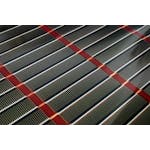Description
In this course, you will learn :
- List and describe the main features of radioactive decay.
- Recall the various radioactive decay modes and their associated properties.
- Describe the main characteristics of nuclear reactions and how to calculate the reaction cross-section.
- Describe scintillation and semiconductor detectors, as well as their applications in detecting gamma rays.
- Explain how neutrons are created, how they are classified, and how they are detected.
- Explain why some radionuclides are difficult to detect and measure, as well as how to deal with them.
- Describe some of the methods and techniques used in the Politecnico di Milano Nuclear Measurements Lab to measure various types of radiation fields.
- Analyze the spectra of two plutonium radioisotopes using two different devices, a portable sodium iodide detector and a GMX HPGe detector.
- Understand the benefits and drawbacks of using alpha spectrometry and Inductively Coupled Plasma mass spectrometry to determine uranium concentration in water.
Syllabus :
- Intro to nuclear processes
- Principles of radiation detection
- Hard-to-Measure radionuclides
- Welcome to nuclear Labs








